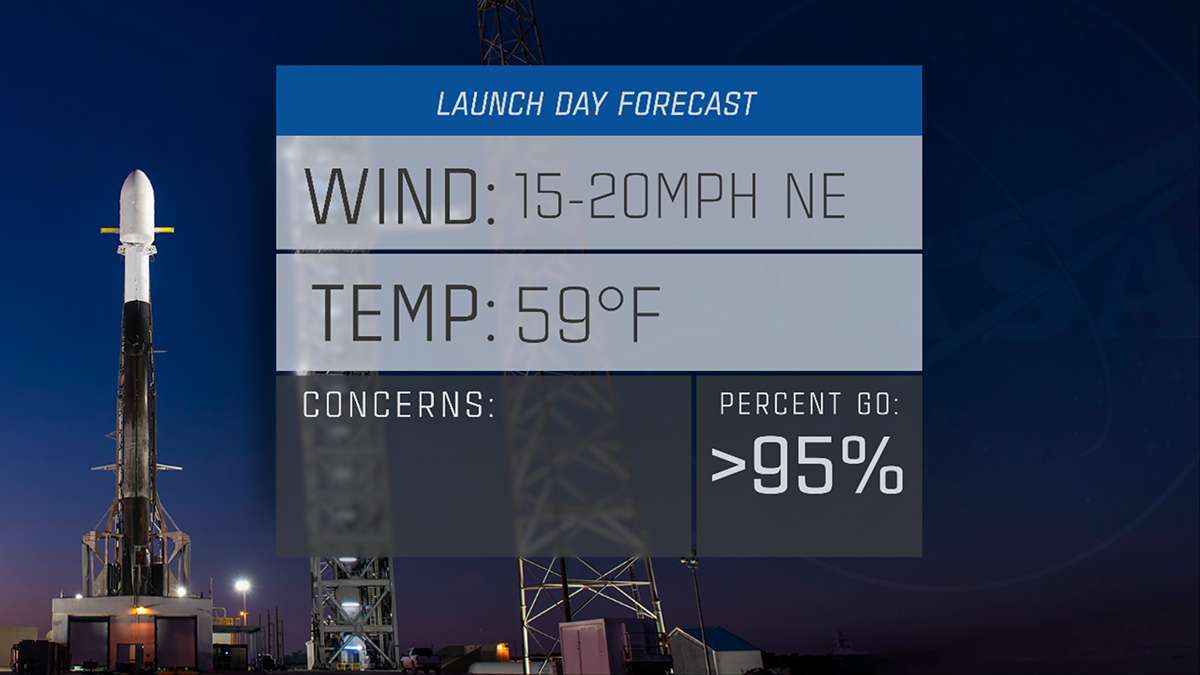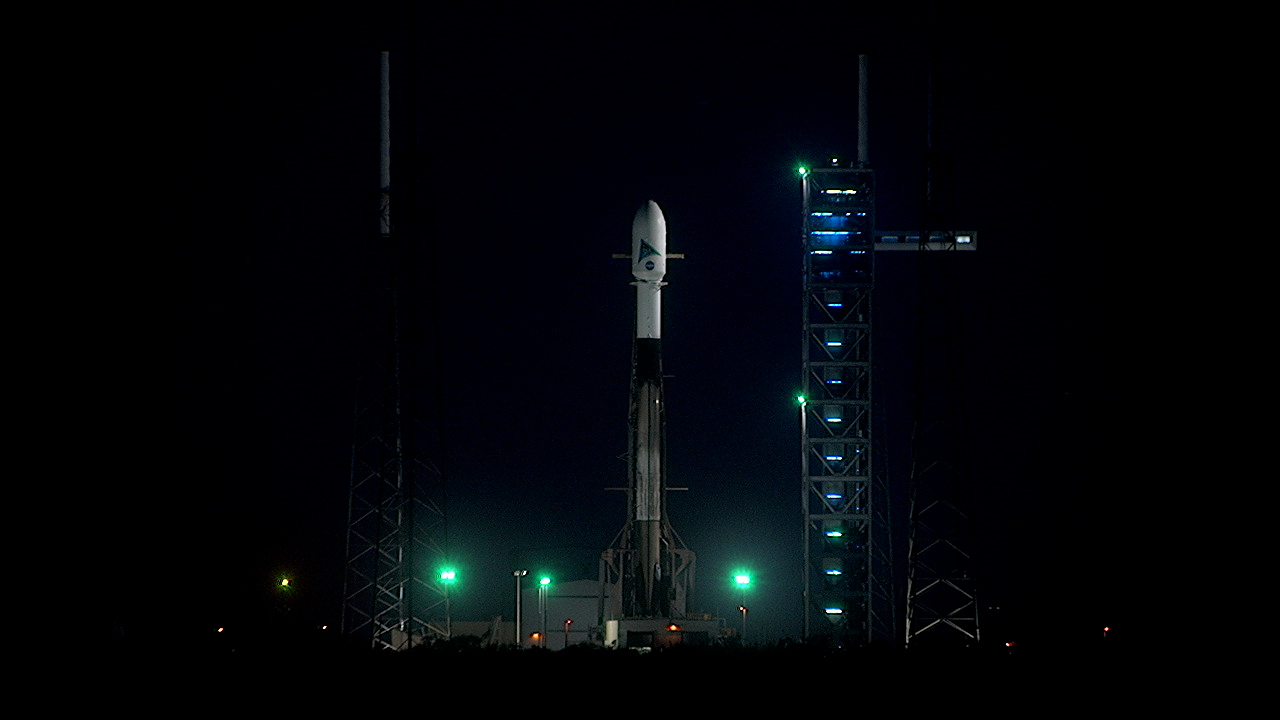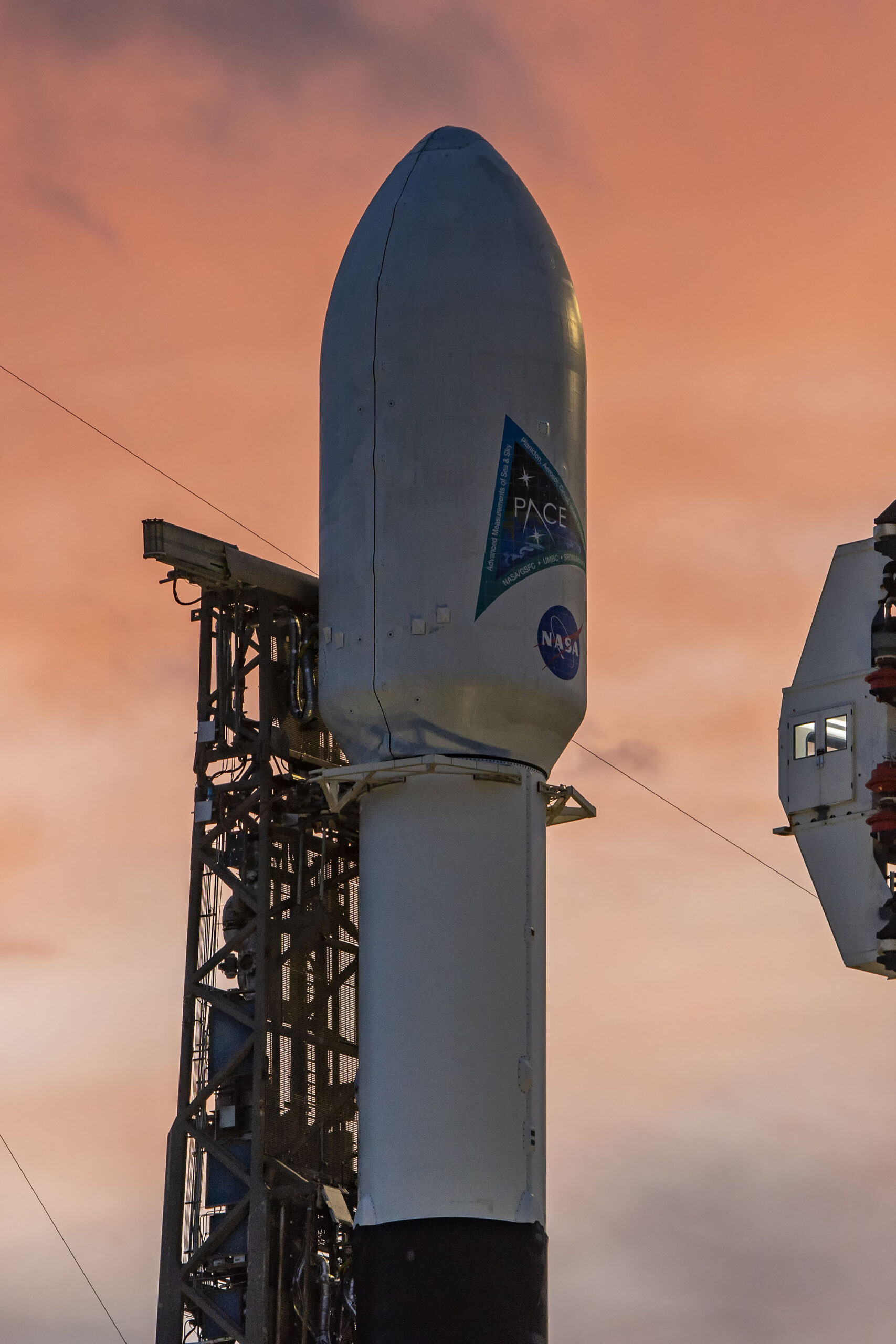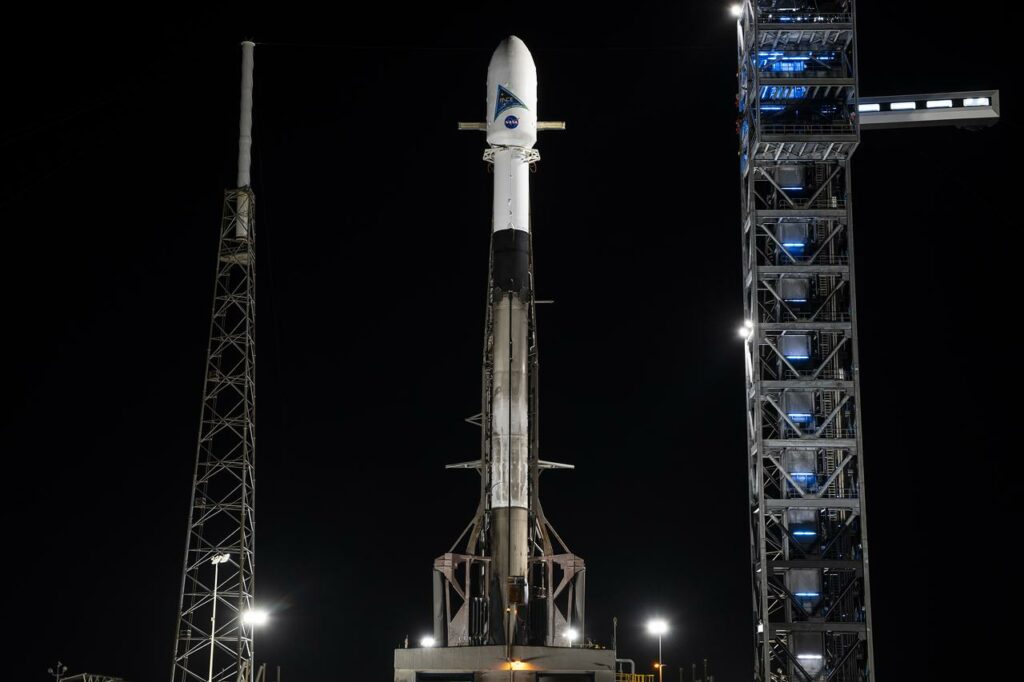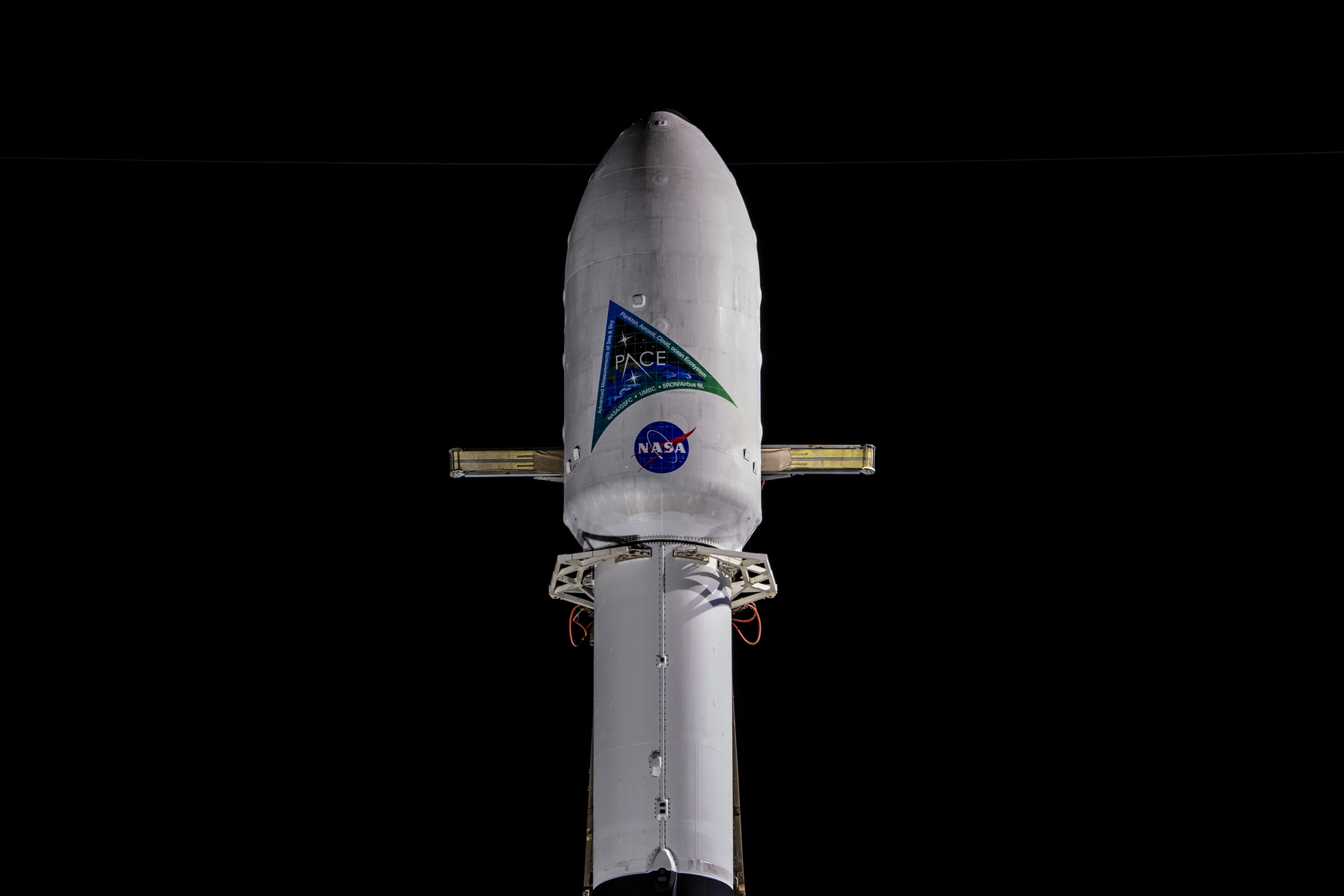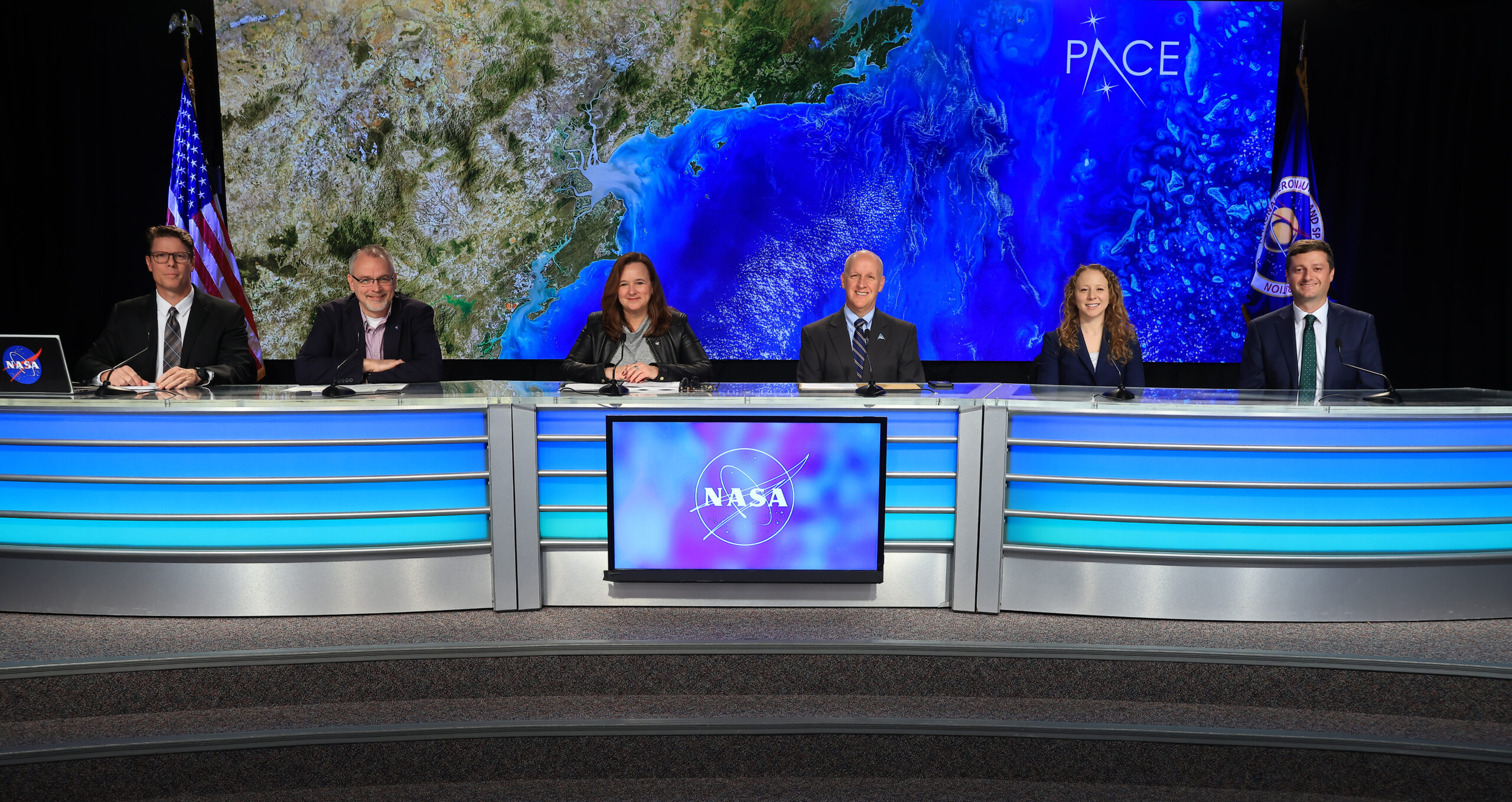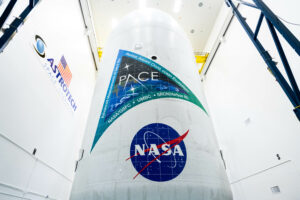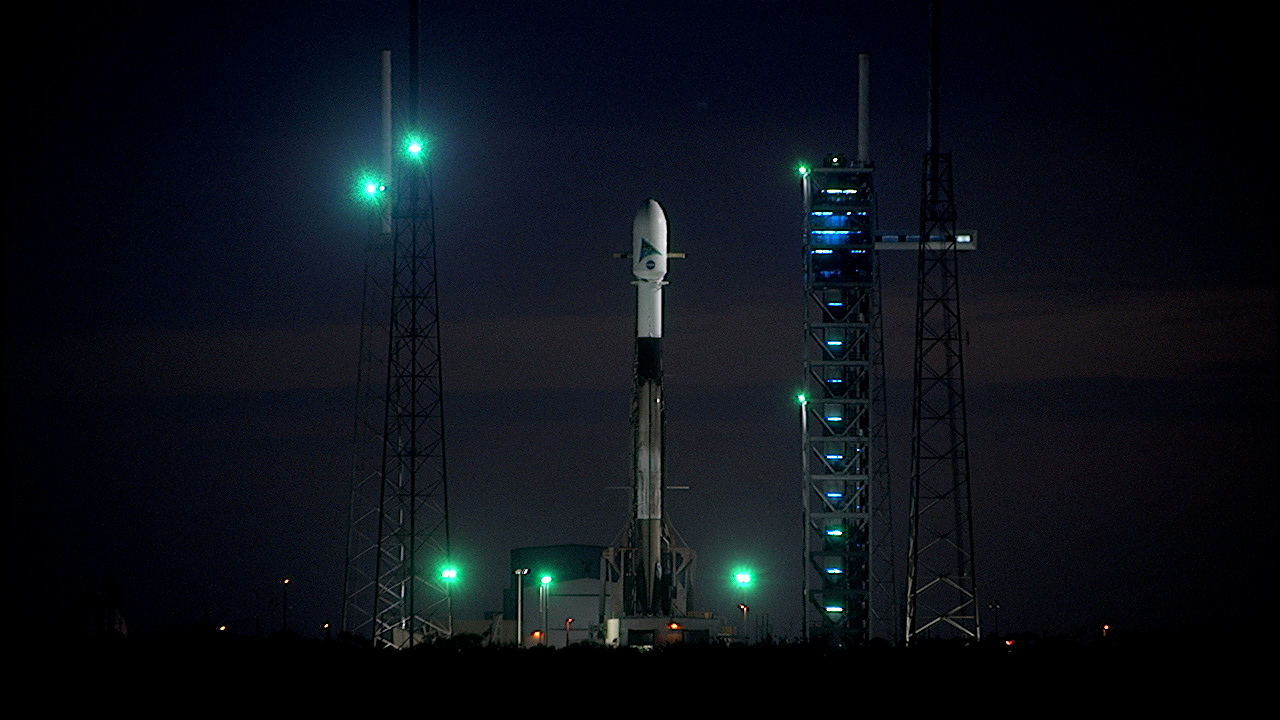
Here’s a look at some of the milestones for this morning’s countdown, liftoff, and ascent of NASA’s PACE (Plankton, Aerosol, Cloud, ocean Ecosystem) mission from Cape Canaveral Space Force Station in Florida. All times are approximate:
COUNTDOWN :
Hr/Min/Sec Event
– 00:38:00 SpaceX Launch Director verifies go for propellant load
– 00:35:00 RP-1 (rocket grade kerosene) loading begins
– 00:35:00 1st stage LOX (liquid oxygen) loading begins
– 00:16:00 2nd stage LOX loading begins
– 00:07:00 Falcon 9 begins engine chill prior to launch
– 00:01:00 Command flight computer to begin final prelaunch checks
– 00:01:00 Propellant tank pressurization to flight pressure begins
– 00:00:45 SpaceX Launch Director verifies go for launch
– 00:00:03 Engine controller commands engine ignition sequence to start
00:00:00 Falcon 9 liftoff
LAUNCH, LANDING, AND SPACECRAFT DEPLOYMENT:
Hr/Min/Sec Event
00:01:07 Max Q (moment of peak mechanical stress on the rocket)
00:02:19 1st stage main engine cutoff (MECO)
00:02:23 1st and 2nd stages separate
00:02:30 2nd stage engine starts
00:02:36 Boostback Burn Starts
00:03:16 Boostback Burn Ends
00:04:15 Fairing deployment
00:05:46 1st stage entry burn start
00:06:11 1st stage entry burn ends
00:06:58 1st stage landing burn start
00:07:32 1st stage landing
00:10:20 2nd stage engine cutoff (SECO-1)
00:12:22 PACE spacecraft deploys

